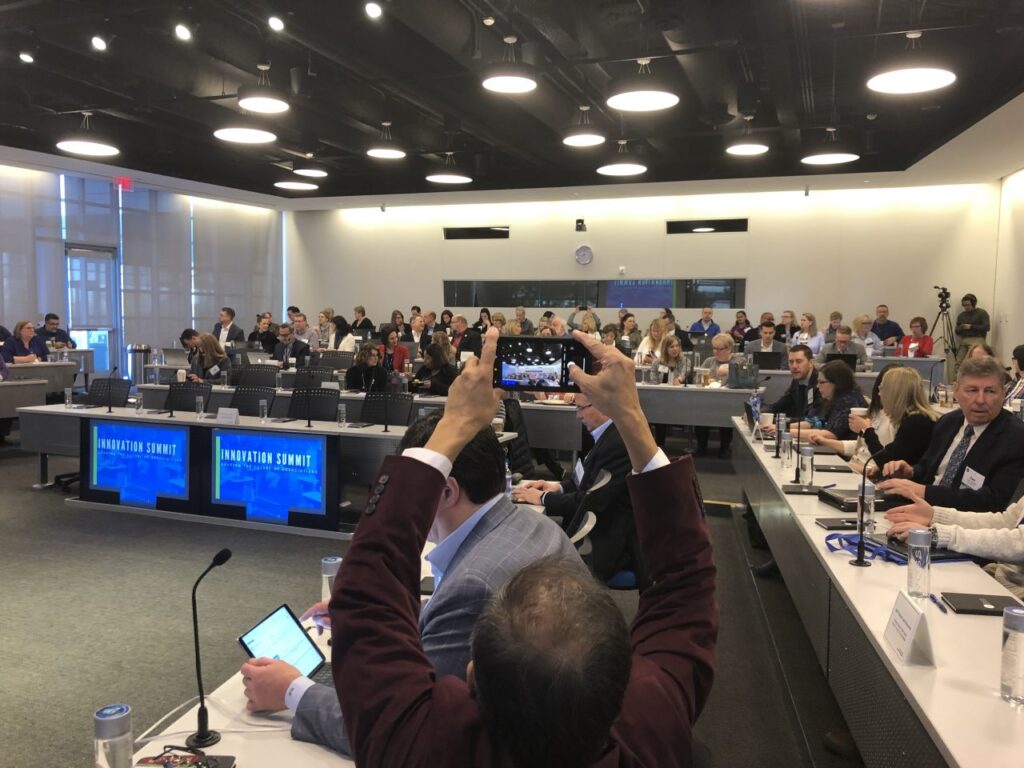My Perspective, March 2020: Innovation Summit Connects the Dots on Entrepreneurship, Invention and Future Success

“Connect the dots” is an expression we heard frequently when we were writing our new book, Association 4.0: An Entrepreneurial Approach to Risk, Courage and Transformation. The entrepreneurs we interviewed used it to describe the ability to spot opportunity and seize it to fill a pressing need in the marketplace.
.orgCommunity’s February 20th Innovation Summit “connected the dots” on a string of ideas that are important to me. The event was a 360-degree exploration of concepts, behaviors and traits that we believe associations will need to adopt for success in the next decade. If you weren’t able to attend in person or virtually, this is a sample of the advice we received on how to prepare for the digital future.

A “Wall of Can’t” in the Corner Office Puts Innovation on Lockdown
When Greg Larkin, Founder, Bowery315, was a newly minted economist, he predicted the 2007 housing crash. Minutes after he made this prescient announcement, lawyers from some of the biggest investment banks in the country threatened to sue him and the start-up company that had commissioned his research. Larkin’s boss stood behind the data, and the threats turned into paper tigers. That story introduced the idea that a collaboration between “pinstripes and punks” is tinder for disruptive innovation. In other words, when the person with the imagination or skill to create something remarkable gets support from the big guns controlling the checkbook and other resources, great invention happens.
The flip side of that scenario is what Larkin calls the “wall of can’t” or the many reasons people find to avoid change. When the person in the corner office builds that wall, you can guess that it’s going to be pretty imposing.
Hugh Lee also emphasized the need for CEOs to champion innovation. Lee, who is Co-Founder and Owner of Fusion Productions said, “Great vision without great people is irrelevant.” Lee believes that finding the right talent is the number one challenge for the future. “You can’t innovate if you’re busy putting out fires,” he advises. In the past, innovation may have been a choice. Today, according to Lee, it is a necessity.
Your Members Think It’s Easy to be Amazon
Lee noted that digital power is doubling roughly every two years. Amazon is testing delivery trucks fitted with 3D printers, JP Morgan Chase has launched the first crypto currency created by a major bank, and, in China, robots are being used to manage Coronavirus. Lee’s point is that these inventions are redesigning the future and increasing the gap between expectations, skills and ability for all of us. Members expect their association’s digital platforms to perform as seamlessly as Amazon or any of the other major online players. It’s up to association leaders to find and develop the talent to get there.
Lee offered these 8 practical tactics that can help close the distance between where you are on the innovation continuum and where you would like to be:
- Follow Jim Collins’s advice and get the wrong people off the bus and put the right people in the right seats
- Create a stop doing list
- Benchmark associations that are investing in culture and digital fluency
- Continue to buildout your core digital backbone
- Improve your knowledge about member experiences and needs
- Focus on data as a key organizational asset and reduce operational silos
- Lead digital strategy from the top
- Make time to scan, retrain, and innovate through continuing education
Find Your Hidden Entrepreneurs and Set Them Free

Brent Gibson was one of several association professionals we interviewed for the book who have a formal role as entrepreneurs within their organizations. In his presentation, Brent, who is Managing Director at NCCHC Resources, Inc. and Chief Health Officer, National Commission on Correctional Health Care, described his responsibilities as an innovator. Gibson outlined the issues that motivated NCCHC to embark on an entrepreneurial journey like this:
- The sense that there was a market to cultivate (Opportunity)
- The urgency to address non-friendly forces in our space (Threat)
- The desire to leverage our reputation and our network’s (Strength)
- The realization that we were starting from scratch with no business plan, capital, or staff (Weakness)
The organization took a calculated risk that has returned significant benefits. Since 2015:
- Approximately 50 projects are completed
- Returning $5,000 to $350,000 each
- Over $2,200,000 in total revenues received to date
- Over $1,200,000 in 2019
- Projections of $1,500,000 in 2020 revenues
- Margins of about 15-20% (depending on cost allocation)
Gibson urged us to invest in ourselves and to develop our potential for generating revenue to advance our missions.
I’ve just scratched the surface of a day-long dialogue that was inspirational but also cautionary. The speakers predicted that organizations that can connect the dots, will find enormous opportunity in the digital environment. But change will be the norm rather than the exception, and association professionals must do the hard work of learning to pivot, adapt and correct course on the fly.
Read full-length profiles of Hugh Lee and Brent Gibson in Association 4.0: An Entrepreneurial Approach to Risk, Courage, and Transformation.

